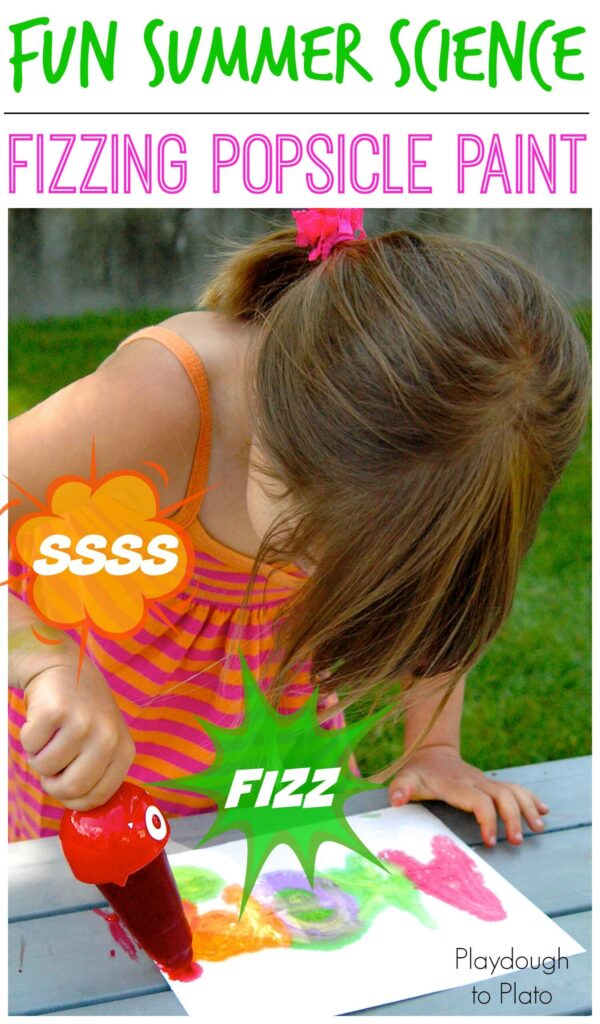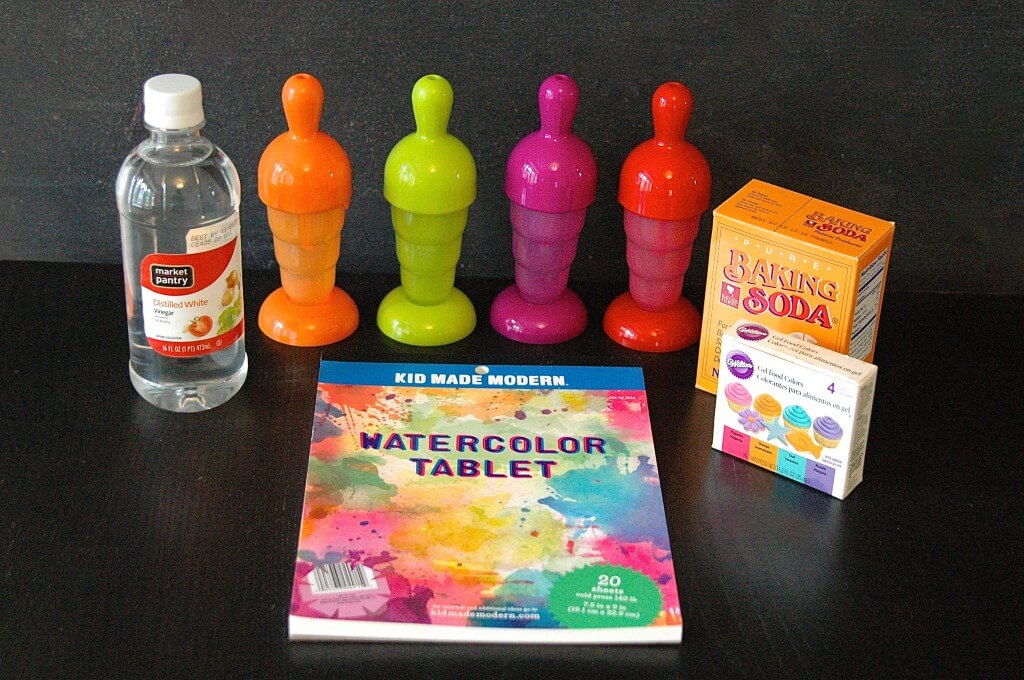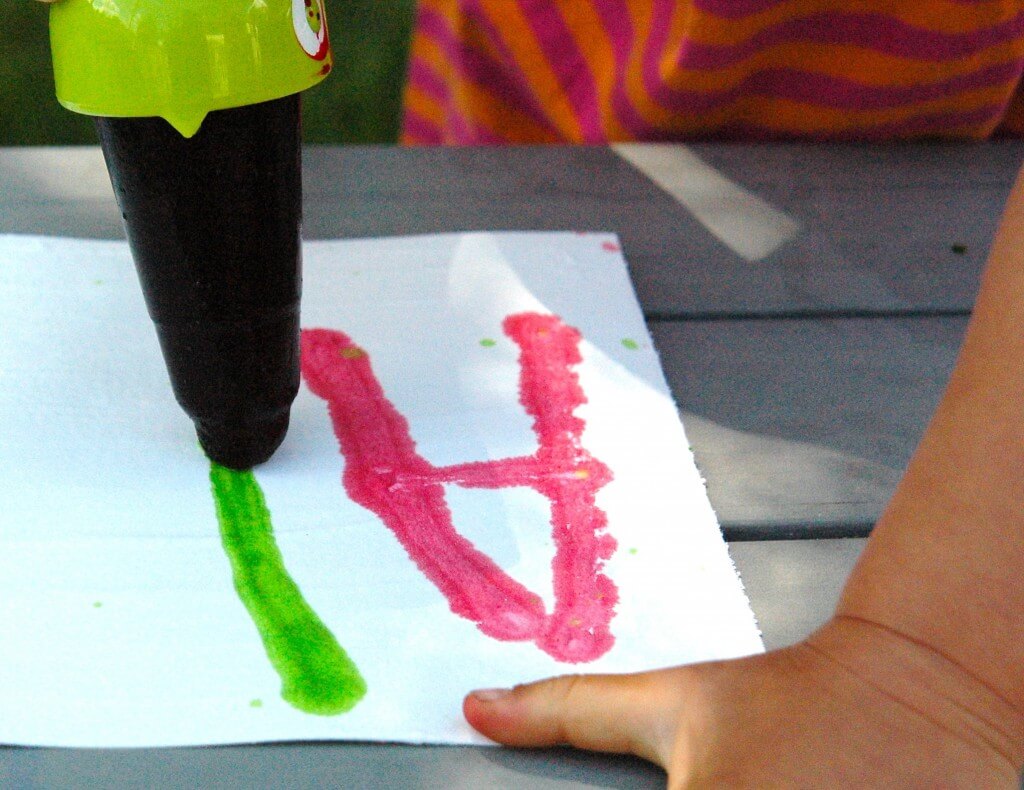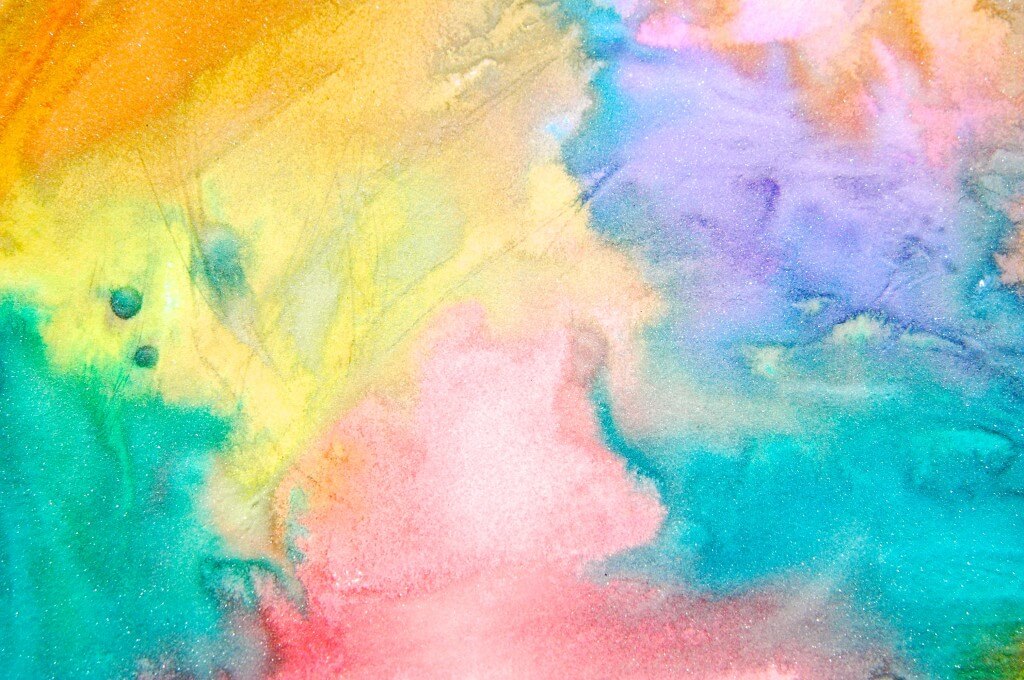

She was thrilled when her masterpiece began fizzing! Ready to make your own batch of magic fizzing popsicle paints? Read on.
Getting Ready
To prep, I gathered a few supplies:
- A popsicle mold
- Vinegar
- Baking soda
- A paint brush
- Food color {liquid watercolors would work well too}
- Watercolor paper

A couple important notes – I made the popsicles the night before to give them time to freeze. Since vinegar has a lower freezing point than water, I also turned my freezer temperature down to 28 degrees.
To make the popsicles , I filled the popsicle molds with vinegar until it almost reached the top. Then I added several drops of food color to each pop, gave them a good stir, and placed them in the freezer.
To prep the watercolor paper for the fizzy reaction, I mixed about a 1/4 cup of baking soda with water until the mixture was about as runny as white glue. Next, I used my paintbrush to paint a nice thick coating of the baking soda mixture over the entire surface of the watercolor paper and set it aside to dry. {You might want to make several sheets. I ended up having to make more on the fly as the kids had so much fun we quickly ran out of the few sheets I pre-made.}
Magic Fizzing Popsicle Paint
The next afternoon, I grabbed the baking soda paper and pops and headed outside with my very excited 4 year old to paint. I wanted A to enjoy painting and watching the baking soda and vinegar reaction without any constraints. A, however, wanted to watch her name bubble up and had a blast making other fizzy letters on other sheets.

“How did you get the popsicles to fizz mama?” A asked.
I had her feel the paper. “Does it feel different?,” I inquired.
“It feels powdery,” she said.
I explained that I covered the paper with baking soda and made the popsicles out of vinegar.
We’ve done many activities with baking soda and vinegar before, so A knows what happens when the two chemicals mix. This time I explained acids and bases to A in simple terms. We talked about how acids taste sour. A decided she needed to taste the vinegar and baking soda and then we thought of a few more foods {like lemon and oranges} that are acidic.
A then turned her attention back to painting and 14 sheets later I had a colorful, bubbly mess and a wonderfully dyed daughter to clean up. We laid the papers out in the sun to dry. They were beautiful!!

The Science Behind It
When the vinegar {an acid} in the popsicle touches the baking soda {a base}, a chemical reaction occurs, releasing carbon dioxide gas that produces fizzy bubbles. For more fun kids’ science, whip up a batch of magic balloons, make pop rockets and pour a rainbow in a jar.
Original article and pictures take http://www.playdoughtoplato.com/kids-science-magic-fizzing-popsicle-paint/ site
Комментариев нет:
Отправить комментарий